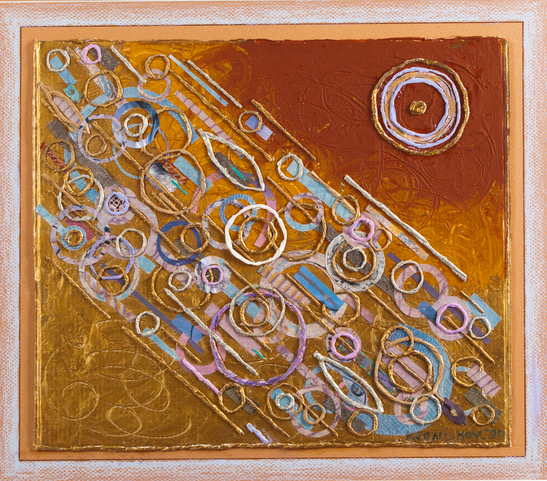
“MIGRATION” – KEENI KESSLER’S JOURNEY (1919-2008) IN ITALY (1939-1947), AND INDIA (1961 – 1967)
Keeni Kessler, a Dutch born Canadian artist, studied at art academies in the UK, Germany and Italy, where she spent the war years (unable to leave due to the conflagration which started in 1939 in Eastern Europe and later in Western Europe) and thus spent much more time than originally planned in Italy, in Tuscany more precisely. She was studying in Florence at an Art Academy and privately under the sculptor Bramanti. (1939-1940). Keeni sculpted the self-portrait in 1939-40 in Florence. In her eyes, Florence made it possible for her to express herself in an intense way, (“becoming Fiorentina”) thus the sculpture is the culmination of that feeling and capability. During that time, she also drew and made a number of water colours of the local scenery and countryside, but most of all drew charcoal portraits which was her main focus. (both types almost all lost) Florence made her: from a shy and insecure young girl, she became a young woman, much more assured and willing to show her abilities without fear of being ridiculed, as she felt it so often happened in Holland.
The forced stay made her integrate completely, as she quickly learned to speak like a native Florentine or “Fiorentina” as the local dialect had no secrets for her, and even though of Northern complexion (blond and blue-eyed) she was almost always taken for a Venetian, which she took as a great compliment! She adopted Florence as her “native country/paese” and even though times were extremely difficult given the war, she met wonderful people that helped her, some indeed saved her life. (she was an “enemy” given her Dutch nationality and had to live in hiding after 1943). She worked for the Allies in Rome at the end of the war until 1947. (The South Africans and the New Zealanders – designing cemeteries for the fallen Allies). In 1948 she emigrated to Canada with her husband.
Her collage art (click here to view her collages) which she undertook much later, was influenced by her time spent in India (where she married a Sikh) from 1961 to 1967 and her extensive travels around the world.
Her time spent in India had an enormous influence over her whole being: living in a South Asian country, and working with her husband at quite an arduous job, where she spent most days except the week end, in a stuffy office in the Colaba district of Bombay (as it was then referred to) was no mean feat, and she worked very hard. She met her husband’s friends, relatives and got a feel for the community, and also the culture because she was immersed in it. After her first year in India, her husband and herself moved to Delhi, as he was originally from there. They built a complete floor on top of the house of his parents, which was situated next to the old residence of the US ambassador, on Ratendone Road, as it was called, by the Lodi Gardens. There, in the early 60’s, Delhi was much smaller and manageable as far as the climate was concerned and also much easier to move around and meet people and travel outside of the capital.
Patwant Singh’ s friends and relations were from all walks of life, be they painters, sculptors, graphic artists, writers, actors, dancers and people in government on a political level and also military. Going away on week ends to the countryside or travelling to Kashmir as they did on their honeymoon, and visiting various places gave Keeni Kessler quite an idea of what India was about. After she returned to Europe, and finally started expressing herself in the best way she was able to, hunched over her grand piano, spending hours on her work, despite a very bad back, gave her a sense of pleasure and fulfilment which she craved.
If we look at some of the collages presented here on the website, such as Le Soufi, Diwali, Tapisserie and l’Orient, we get a distinct feeling of an oriental influence, be it the motifs used (‘Orient especially) and very clearly Diwali (which refers to the festival of Light), and to a lesser degree in Tapisserie. The shapes, the colours and decorations which accompany these collages are a clear reference to her “passage in India” rather than “to India”! (E.M. Forster’s book) where Keeni Kessler ultimately left India due to a severe illness. Most likely there was misunderstanding between her and her husband, but after she left India, many years later, her ex-husband Patwant Singh and herself made up, and became friends again in an appeased way. He passed away some years after her.
